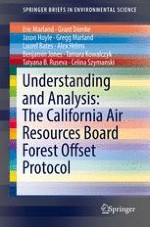2017 | OriginalPaper | Chapter
7. Role of Forest Service Data and Methodologies
Authors : Eric Marland, Grant Domke, Jason Hoyle, Gregg Marland, Laurel Bates, Alex Helms, Benjamin Jones, Tamara Kowalczyk, Tatyana B. Ruseva, Celina Szymanski
Published in: Understanding and Analysis: The California Air Resources Board Forest Offset Protocol
Publisher: Springer International Publishing
Activate our intelligent search to find suitable subject content or patents.
Select sections of text to find matching patents with Artificial Intelligence. powered by
Select sections of text to find additional relevant content using AI-assisted search. powered by
